
The Peenemünde Army Research Center was founded in 1937 as one of five military proving grounds under the German Army Weapons Office (Heereswaffenamt). Several German guided missiles and rockets of World War II were developed by the HVP, including the V-2 rocket. The works were attacked by the British in Operation Crossbow from August 1943, before falling to the Soviets in May 1945.
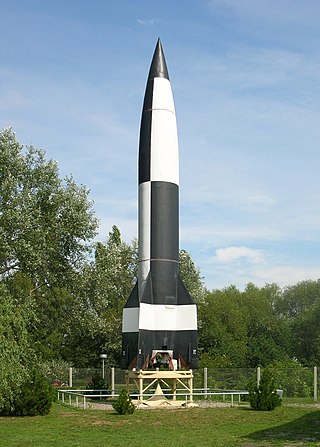
The V2, with the technical name Aggregat 4 (A4), was the world's first long-range guided ballistic missile. The missile, powered by a liquid-propellant rocket engine, was developed during the Second World War in Nazi Germany as a "vengeance weapon" and assigned to attack Allied cities as retaliation for the Allied bombings of German cities. The V2 rocket also became the first artificial object to travel into space by crossing the Kármán line with the vertical launch of MW 18014 on 20 June 1944.

In World War II, the Polish armed forces were the fourth largest Allied forces in Europe, after those of the Soviet Union, United States, and Britain.[a] Poles made substantial contributions to the Allied effort throughout the war, fighting on land, sea, and in the air.

The Home Army was the dominant resistance movement in German-occupied Poland during World War II. The Home Army was formed in February 1942 from the earlier Związek Walki Zbrojnej established in the aftermath of the German and Soviet invasions in September 1939. Over the next two years, the Home Army absorbed most of the other Polish partisans and underground forces. Its allegiance was to the Polish government-in-exile in London, and it constituted the armed wing of what came to be known as the Polish Underground State. Estimates of the Home Army's 1944 strength range between 200,000 and 600,000. The latter number made the Home Army not only Poland's largest underground resistance movement but, along with Soviet and Yugoslav partisans, one of Europe's largest World War II underground movements.

The Boeing X-20 Dyna-Soar was a United States Air Force (USAF) program to develop a spaceplane that could be used for a variety of military missions, including aerial reconnaissance, bombing, space rescue, satellite maintenance, and as a space interceptor to sabotage enemy satellites. The program ran from October 24, 1957, to December 10, 1963, cost US$660 million, and was cancelled just after spacecraft construction had begun.
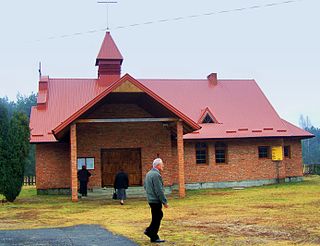
Blizna is a village in the administrative district of Gmina Ostrów, within Ropczyce-Sędziszów County, Subcarpathian Voivodeship, in south-eastern Poland. It lies approximately 12 kilometres (7 mi) north of Ostrów, 12 km (7 mi) north of Ropczyce, and 34 km (21 mi) north-west of the regional capital Rzeszów.

The Aggregat series was a set of ballistic missile designs developed in 1933–1945 by a research program of Nazi Germany's Army (Heer). Its greatest success was the A4, more commonly known as the V2.
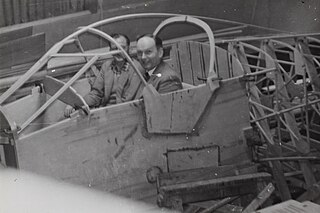
Henry K. Millicer, AM born Henryk Kazimierz Milicer, was a Polish-Australian aircraft designer and pilot.
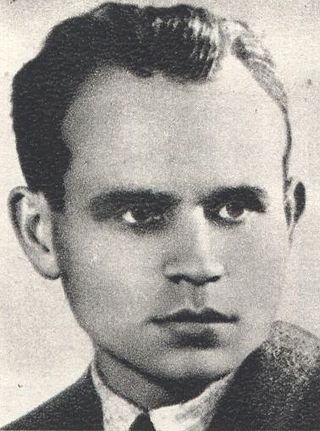
Antoni Kocjan was a renowned Polish glider constructor and a contributor to the intelligence services of the Polish Home Army during World War II.

In Poland, the resistance movement during World War II was led by the Home Army. The Polish resistance is notable among others for disrupting German supply lines to the Eastern Front, and providing intelligence reports to the British intelligence agencies. It was a part of the Polish Underground State.

The 111th Fighter Escadrille of the Polish Air Force was one of the fighter units of the Polish Army. Created in 1921, immediately after the end of the Polish-Soviet War, the unit inherited the traditions of the famous war-time Polish 7th Air Escadrille, in which both Polish and American volunteers served.
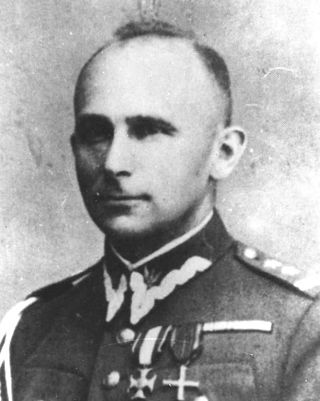
The Bureau of Information and Propaganda of the Headquarters of Związek Walki Zbrojnej, later of Armia Krajowa, a conspiracy department created in spring 1940 during the German occupation of Poland, inside the Związek Walki Zbrojnej, then of the Supreme Command of Armia Krajowa.
"Big Ben" was the World War II code name for the British project to reconstruct and evaluate captured German missiles such as the V-2 rocket. On 31 July 1944, after the UK agreed to exchange Supermarine Spitfires for the wreckage of a V-2 in Sweden during World War II, experts at Farnborough began an attempt to reconstruct the missile.
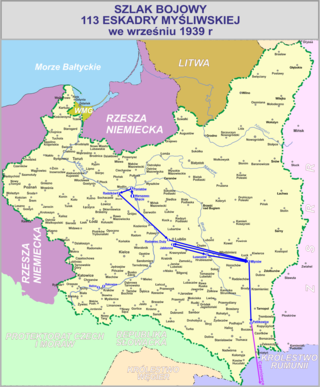
The 113th Fighter Escadrille of the Polish Air Force was one of the fighter units of the Polish Army at the beginning of World War II.

The 121st Fighter Escadrille of the Polish Air Force was one of the fighter units of the Polish Army in 1939.

161. Fighter Escadrille was a unit of the Polish Air Force at the start of the Second World War. The unit was attached to the Łódź Army.

Military intelligence on the V-1 and V-2 weapons developed by the Germans for attacks on the United Kingdom during the Second World War was important to countering them. Intelligence came from a number of sources and the Anglo-American intelligence agencies used it to assess the threat of the German V-weapons.
The Polish Fighter Squadron, also known by its designation GC I/145, was the largest fighter unit of the Polish Air Forces in France. Formed of Polish pilots who evaded capture by the Nazis and the Soviets in the aftermath of the Invasion of Poland of 1939, the unit was initially earmarked to be sent to Finland as part of the aborted plan of Allied intervention in the Winter War. Eventually it took part in the Battle of France defending the French skies along with the allied armies.

The Blizna V-2 missile launch site was the site of a World War II German V-2 missile firing range. Today there is a small museum located in the Park Historyczny Blizna in Blizna, Poland. After the RAF strategic bombing of the V-2 rocket launch site in Peenemünde, Germany, in August 1943, some of the test and launch facilities were relocated to Blizna in November 1943. The first of 139 V-2 launches was carried out from the Blizna launch site on 5 November 1943.



















